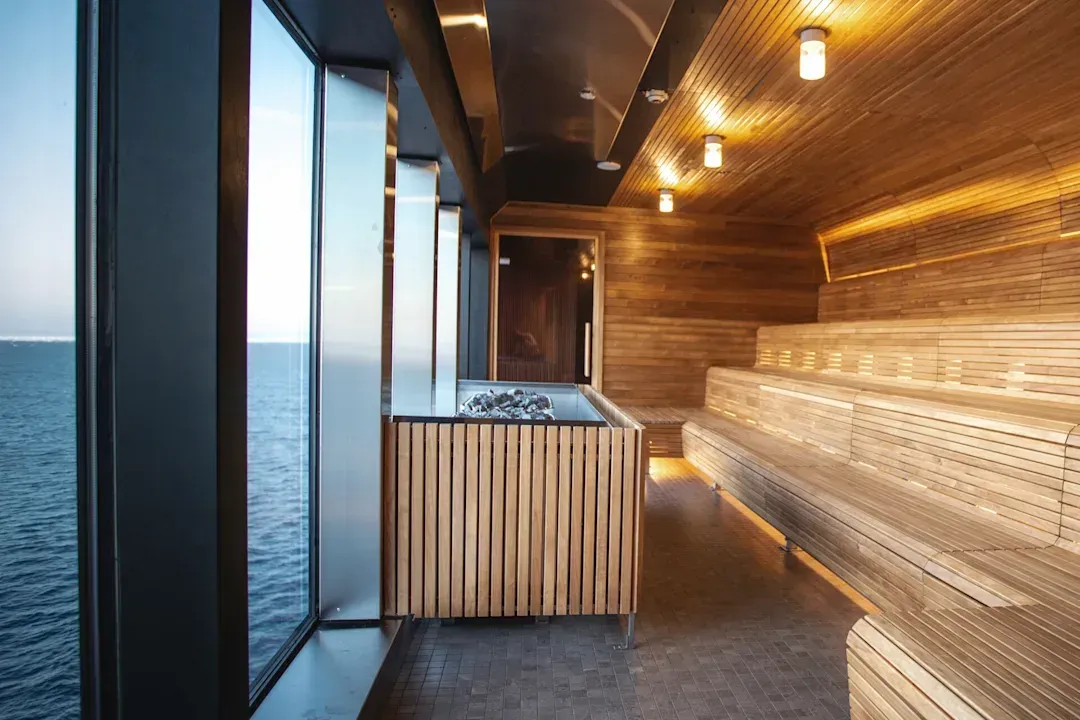Alaska & British Columbia
Inside Passage, Bears, & Aleutian Islands
17 Days
Seattle to Vancouver
Expedition Cruise
Countries
United States
Canada
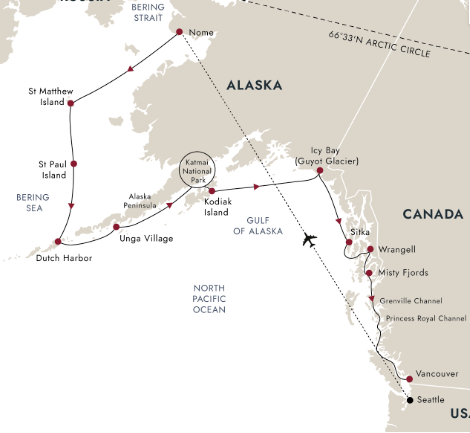

Overview
Discover the pristine beauty of Alaska’s rugged coast, as well as Canada’s Inside Passage and the Aleutian Islands. In Misty Fjords National Monument and on remote islands, you’ll visit where nature reigns free. As we go, keep an eye out for brown bears on Kodiak Island and in Katmai National Park, and scout for whales, fur seals, birds like bald eagles, and rarities like the Kittlitz’s murrelet as we voyage north. Meet people belonging to Indigenous Tlingit and Unangan cultures, hunt for petroglyphs in Wrangell, and follow in the footsteps of gold prospectors and explorers on your expedition cruise. You’ll visit the picturesque ghost town of Unga and uncover ancient stories on mossy totem poles at Chief Shakes Tribal House, and you’ll go home with a profound sense of knowing the culture, ecology, and history of this beautiful region.
Itinerary
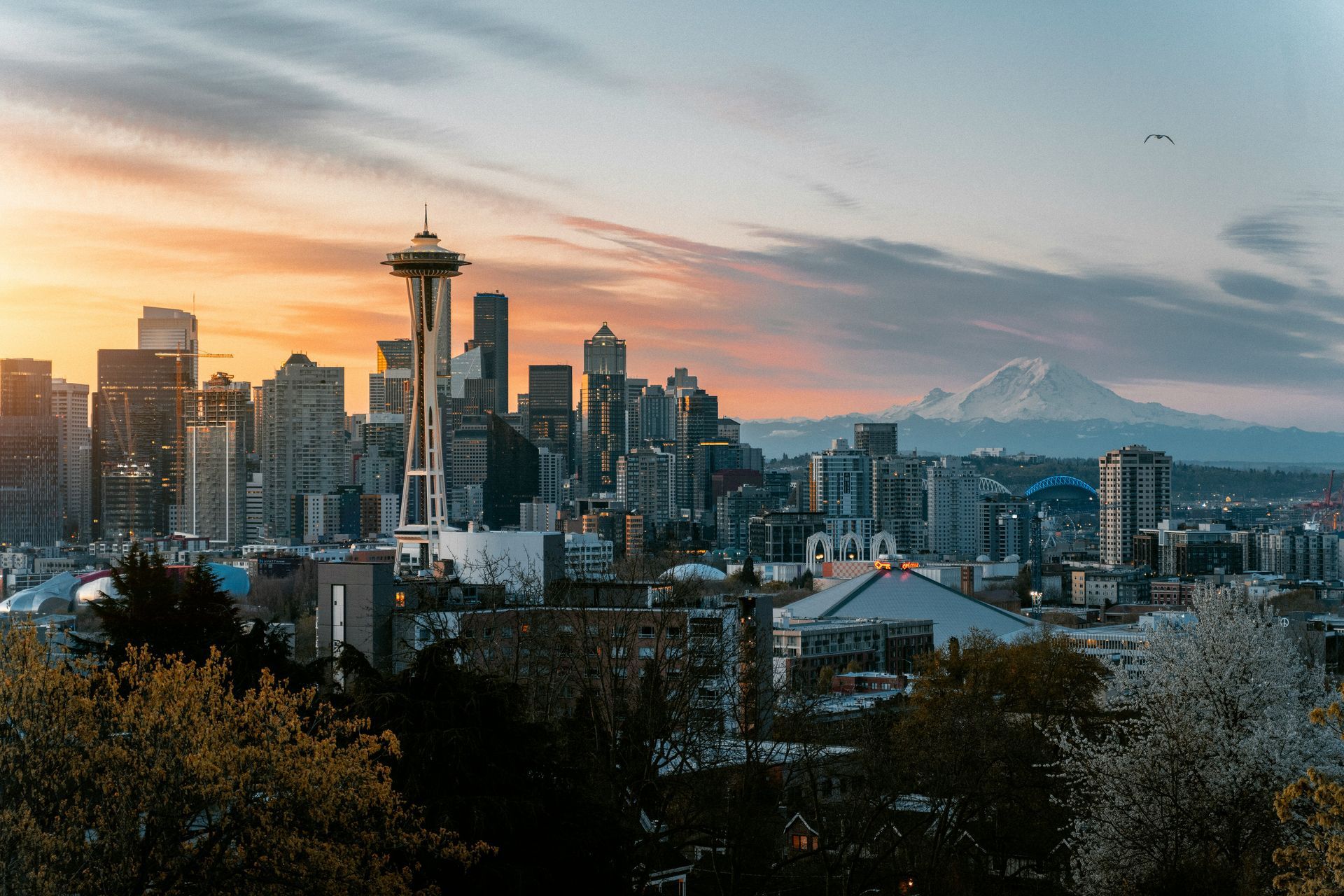
Scenic Seattle
Begin your adventure in the Emerald City. Your expedition cruise starts with an overnight stay in Seattle. If you can, why not arrive early and see what the Emerald City has to offer? Take a stroll through the nine-acre Olympic Sculpture Park for incredible views of Puget Sound and the surrounding mountains, admiring the work of renowned artists as you go. For a feast of the senses, visit the famous Pike Place Market. Operating for over a century, this lively farmer’s market boasts everything from buskers and bars to salmon-throwing fishmongers!
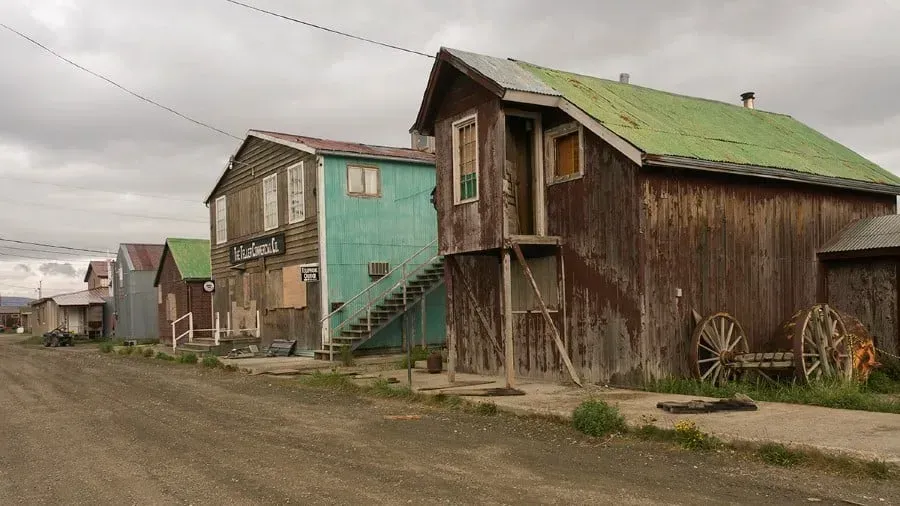
Your Expedition Begins
Launch your adventure in historical Nome. Today, we’ll fly you from Seattle to Nome for the start of your expedition cruise. Set at the tip of the Seward Peninsula and overlooking the Bering Sea, Nome is perhaps the most famous Gold Rush town in Alaskan history. There are artifacts from this era to be seen everywhere, including abandoned dredges, turn-of-the-century steam engines, and old railroad tracks. Nome was also the end point of three of Roald Amundsen’s great polar expeditions, including an attempt to reach the North Pole by air in 1926. It’s a fitting place to launch your grand Alaska adventure.
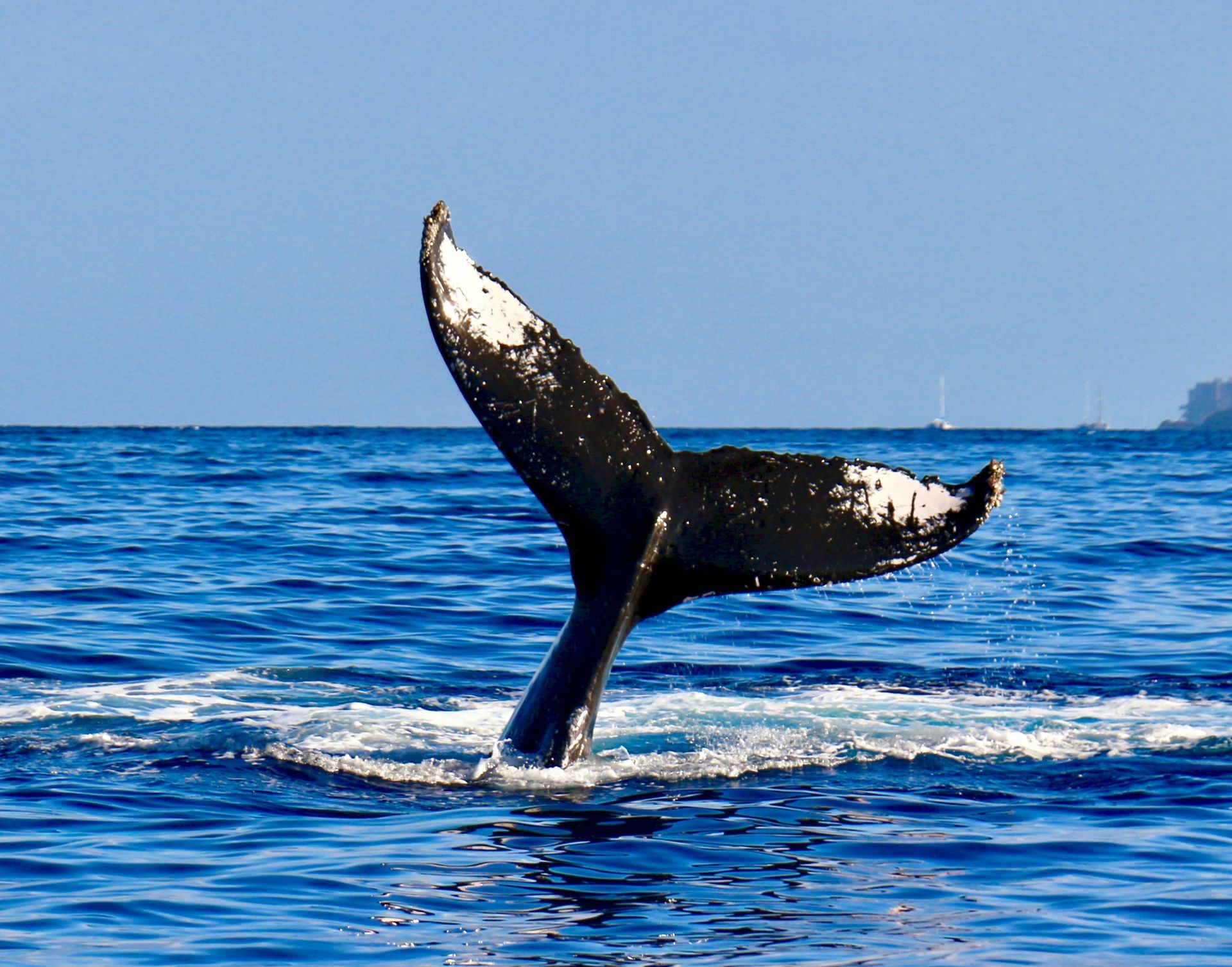
Exploring the Bering Sea
Get ready for adventure and watch for wildlife at sea. Spend your first day at sea chatting with fellow explorers or just watching the world sail by out on deck. You’ll have plenty of time to get to know your expedition ship, so perhaps now’s the time to take advantage of its facilities as you settle into expedition mode. Along with talks by the Expedition Team about what to expect on the voyage ahead, delve into the books in the onboard library and get to know the Science Centre. Natural wonders abound here, so keep an eye out for humpback whales and seabirds wheeling through the skies.
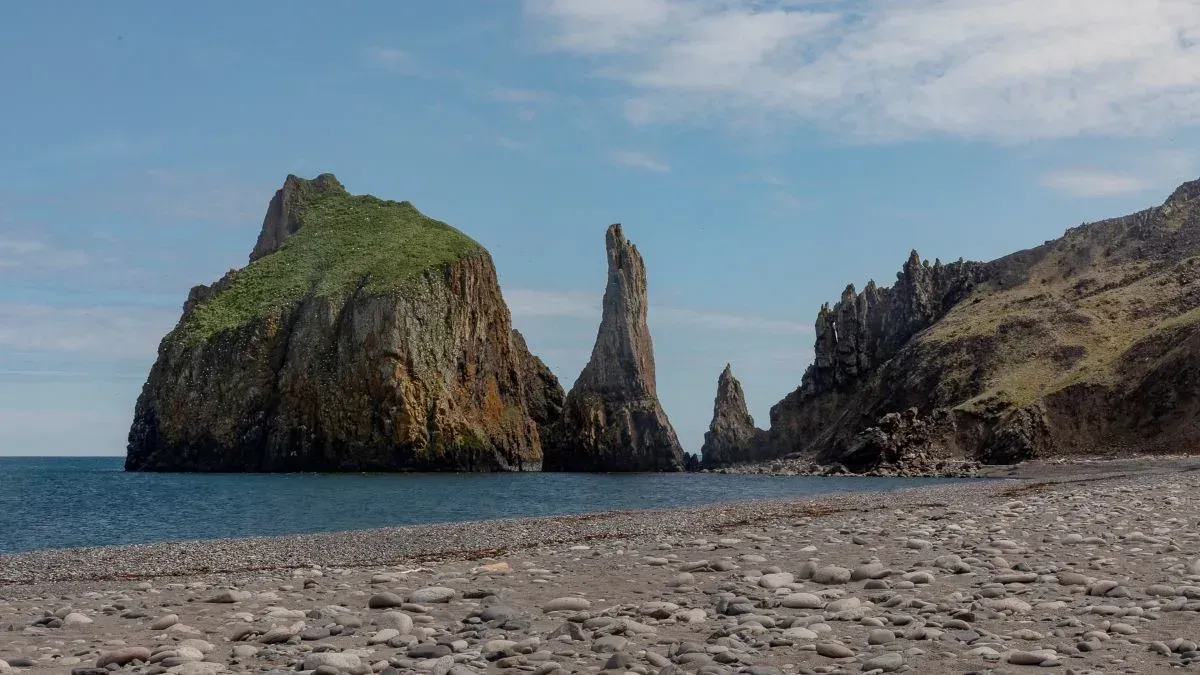
Wild St. Matthew
Experience this wild, remote, and isolated island. Part of the Alaska Maritime National Wildlife Refuge and 200 miles from the nearest village, St. Matthew Island is wild, remote, and isolated. You’ll see traces of abandoned buildings between black sand beaches and wildflower-dotted tundra. A few hardy souls have tried—and failed—to make a home here. Today, the only inhabitants are birds, including thousands of puffins, murres, and cormorants. On our nature landing, if we’re lucky, we’ll see the rare McKay’s bunting, which breeds almost exclusively here, and listen out for the sound of the singing vole, which was named after its unusual warning cry.
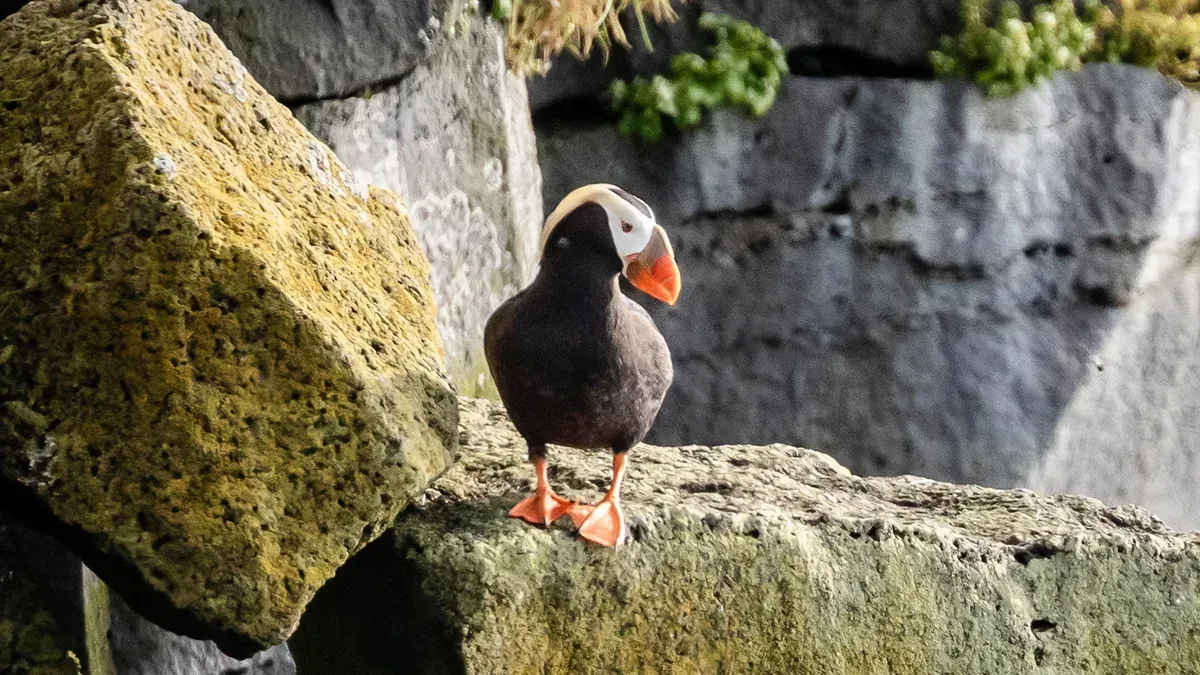
Unangan Life in St. Paul
Look out for wildlife on the largest of the Pribilof Islands. The windswept island of St. Paul is home to the largest Unangan community in the US, numbering around 480. You can visit the historical remains of barabaras here—traditional dwellings built halfway underground to protect against the sea winds. St. Paul is also designated an Important Bird Area, and around 300 species of migrating birds use it as a resting point. Scan for horned and tufted puffins, the Pribilof sandpiper, and the rare red-legged kittiwake. On the shore, you may find northern fur seals waddling and playing—half the world's population of these charming animals lives on these islands.
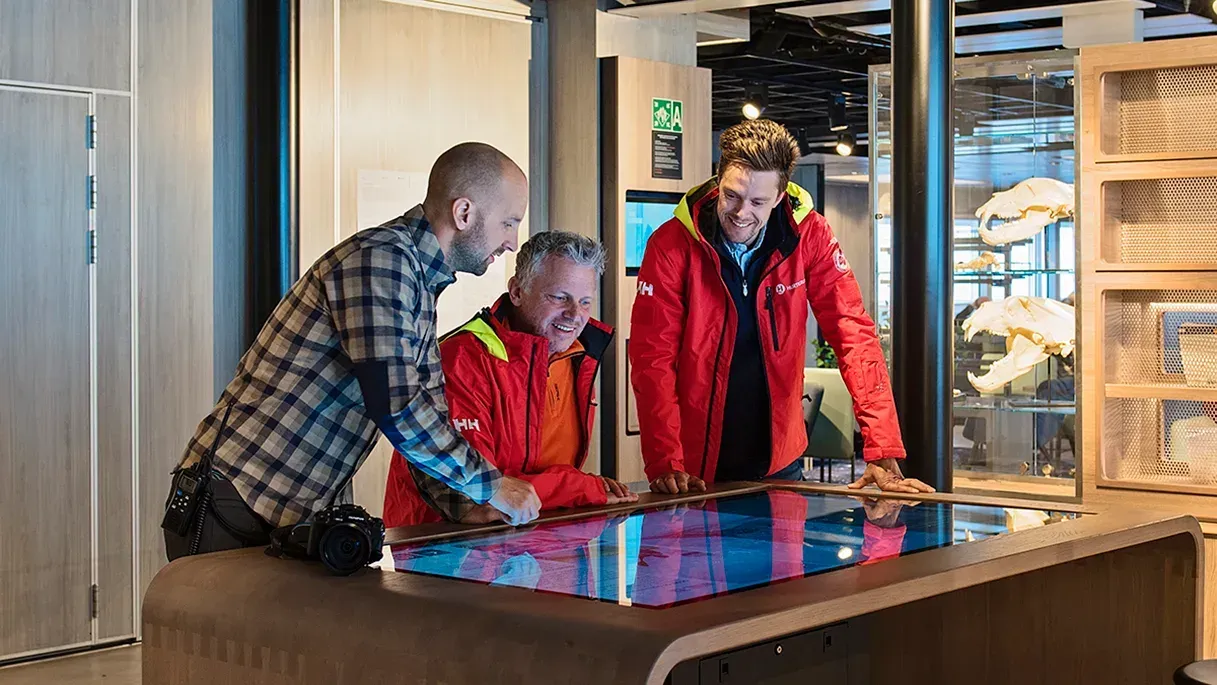
Learning and Leisure
Relax and reflect as we cruise along the coast. We’ll continue south through the Bering Sea from the Aleutian Islands toward our next stop of Dutch Harbor. The Expedition Team will prepare you for our upcoming destinations and continue their lecture series. Keep scanning the seas and skies for puffins, auklets, and murrelets, especially closer to the coast. If you’re lucky, you might glimpse the red-legged kittiwake, which is only found in this part of the world. If you’d like to take it easy, you can take in the panoramic views from our Explorer Lounge & Bar, from the infinity pool or from the outdoor hot tubs.
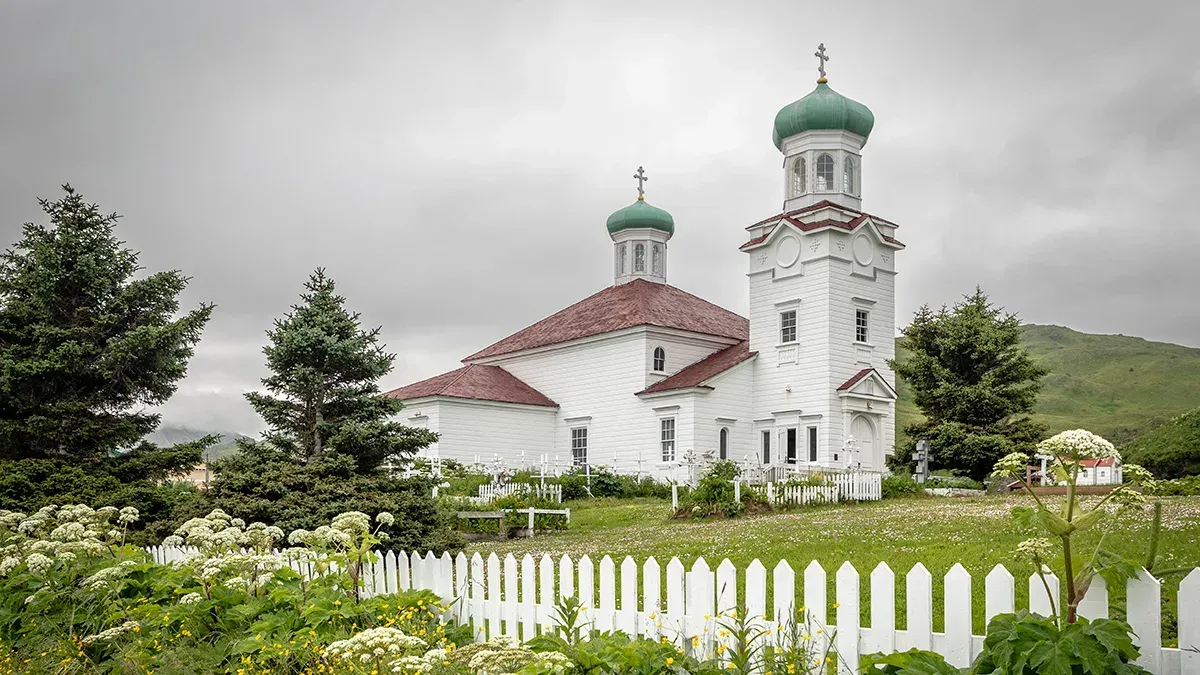
Discover Dutch Harbor
Learn the fascinating history of America’s biggest fishing port. The US’s largest fishing port, Dutch Harbor, is a fascinating place to visit. As we sail towards it, you may see Mount Makushin, a sometimes-steaming volcano reaching almost 6,000 ft. Here, you’ll learn about the local Indigenous Unangax̂ people at the Museum of the Aleutians. Visit the Russian Orthodox Cathedral or tour the WWII museum commemorating the battle that took place here in 1942. Scout for bald eagles and puffins. Foxes, lemmings, and wild horses thrive on land, while whales, sea lions, and porpoises command the waters. Dutch Harbor was the filming location of the reality television series The Deadliest Catch, which follows crab fishermen at work under extreme conditions.
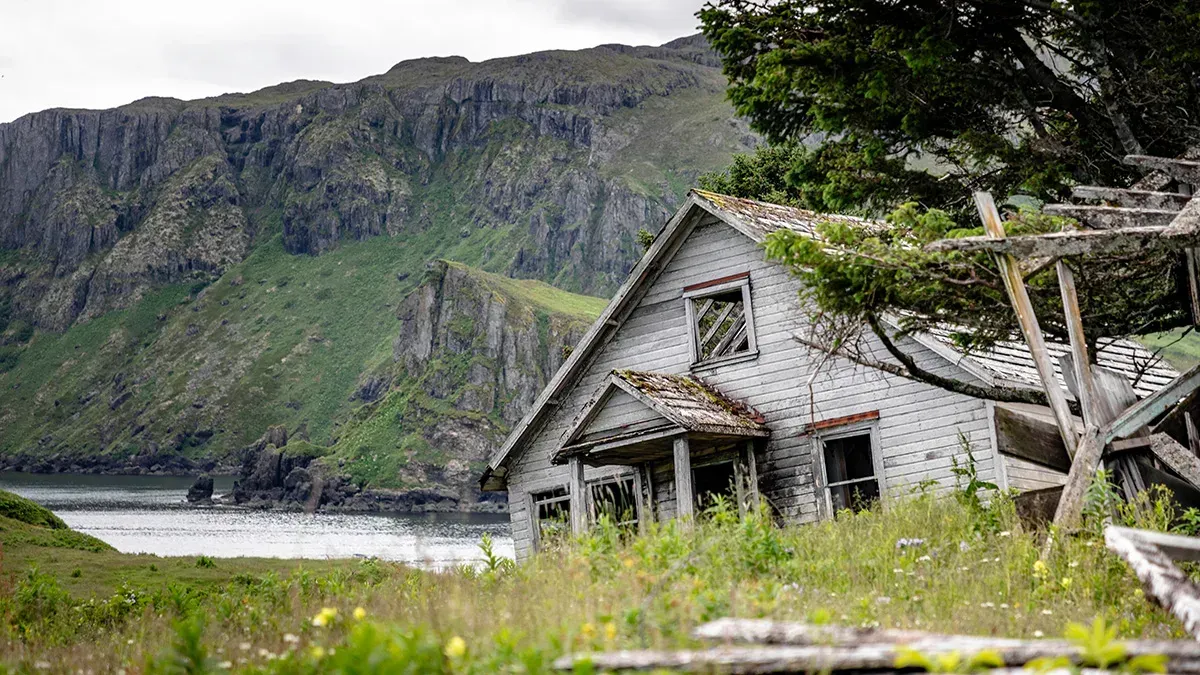
The Ghost Town of Unga
Experience a deserted Alaskan town. Wild and deserted, Unga Village is an abandoned yet fascinating settlement on the southern end of Unga Island. It was settled by the Unangax̂ people in 1833 but was abandoned in 1969 as subsistence fishing proved insufficient to support living here. Today, the few wooden buildings that remain are the only evidence that people once lived here. Pink lousewort, fireweed, and other wildflowers surround the abandoned shacks as nature has gradually taken over. Experience the eerie beauty of this place during a nature landing with our small expedition boats.
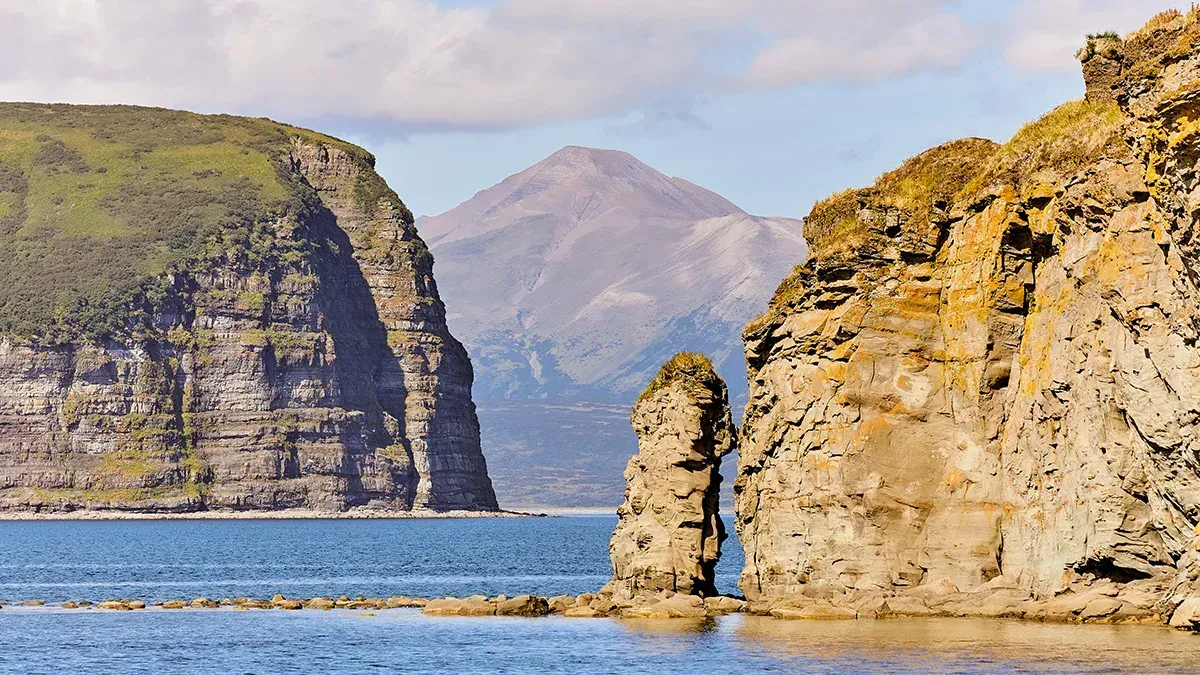
The Remote bays of the Alaska Peninsula
Explore rugged scenery in an untamed wilderness. The Alaska Peninsula is an untamed wilderness and a haven for wildlife. The region is characterized by its raw coastal landscapes, towering mountains and secluded bays. Join your Expedition Team for close exploration of hidden bays and inlets along the shoreline, offering the opportunity to scout for bears, bald eagles, and marine species like sea otters and humpback whales. Learn about the geological evolution of the region, appreciating how natural forces have sculpted the unique topography around you.
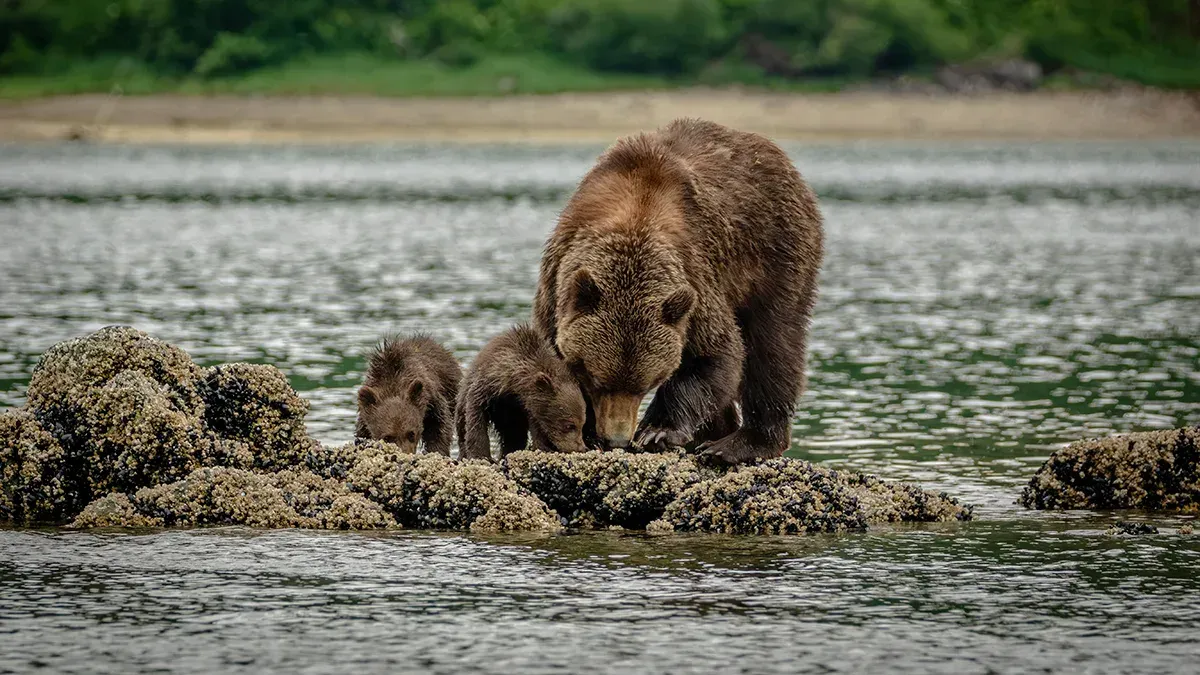
Brown Bears in Katmai
Spot brown bears in Katmai National Park. Your adventure continues in the four-million-acre Katmai National Park, which has over a dozen active volcanoes. Katmai is also home to more than 2,000 protected brown bears – the largest concentration in the world. We’ll safely scout for bears from the deck or in our small expedition boats. They might be foraging for berries, digging for clams, or catching fish in the stream. Depending on conditions, we might visit either Geographic Harbor, Kinak Bay or Kukak Bay.
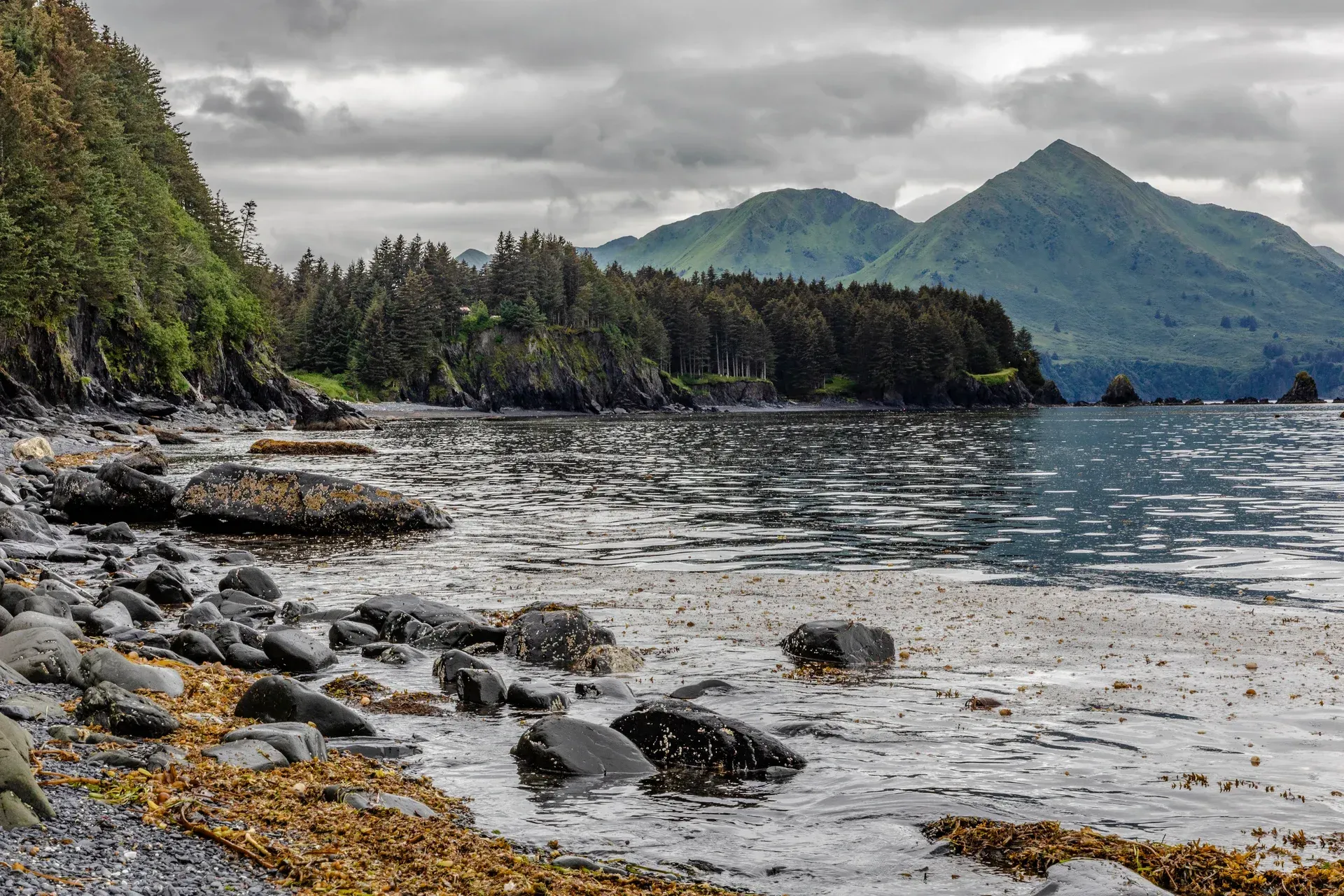
Verdant Kodiak
Explore the home of the Alutiiq people. Kodiak Island, known as the ‘Emerald Isle, features lush temperate forests, mountains, and a rugged coastline. Its wetlands are home to a variety of bird species and wildlife, including the island’s most iconic residents - Kodiak bears. Around 3,500 of them live in the Kodiak National Wildlife Refuge, which covers two-thirds of the island. We’ll search for whales, sea otters, and seals, and, if we’re lucky, catch a glimpse of Kodiak brown bears in their natural habitat, all set against the stunning backdrop of Alaska’s wilderness.

Across the Gulf of Alaska
Enjoy a day of relaxation and birdwatching at sea. Your cruise continues across the Gulf of Alaska. It’s the ideal time to enjoy onboard facilities such as the infinity pool, hot tubs, and sauna. Go for a run, hit the gym, or enjoy a massage in the spa. In the Science Center, the Expedition Team invites you to join lectures about subjects such as Alaska’s wildlife, geology, glaciology, history, and culture. Relax in the Explorer Lounge & Bar and share a drink with your fellow guests, or just sit back and enjoy the view. See if you can spot all three species of North Pacific albatross. The Laysan and black-footed albatross are often sighted, but the short-tailed albatross is harder to spot.

Glaciers of Icy Bay
Spot wildlife in these glacier-fed waters. Today is an exploration day in Icy Bay. Three glaciers – Guyot, Yahtse, and Tyndall – can be seen from this bay. If conditions allow, you’ll explore in our small expedition boats or by kayak, immersing you in the remarkable beauty of this icy landscape. From Icy Bay, you can admire striking, jagged Mt St Elias, known for its steep vertical relief, which has the second-tallest peak in the US and third third-tallest in the US and Canada at over 18,000 ft. In the Gulf of Alaska for we’ll scout for humpback whales, orcas, sea otters, and harbour seals often seen in these waters.
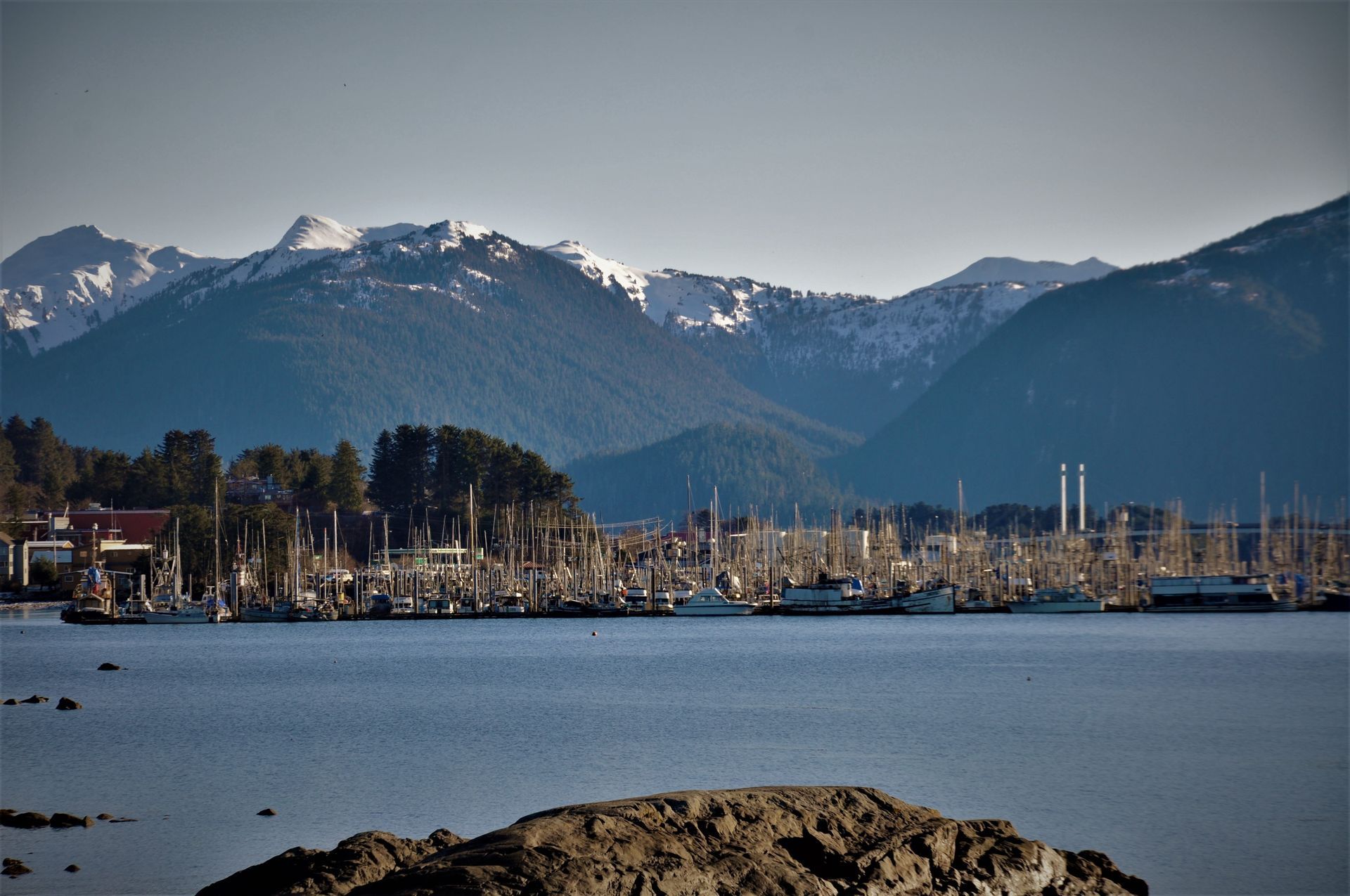
Blended Cultures of Sitka
Take in Sitka’s views and a unique mix of cultures. Surrounded by Tongass National Forest, Sitka is only accessible by sea or air. Get out on deck for stunning views of the Sisters Mountains and Mount Edgecumbe volcano. Inhabited by the Łingít people for 10,000 years, the town was settled by Russian explorers around the turn of the 19th century before being sold to the United States after Russia lost the Crimean War. Today, Sitka has roots in all three cultures. A visit to the Russian Orthodox cathedral and the Russian Bishop's House is recommended. Admire ornate Haida and Łingít totem poles at Sitka National Historical Park and enjoy a walking trail through the forest to the ocean.
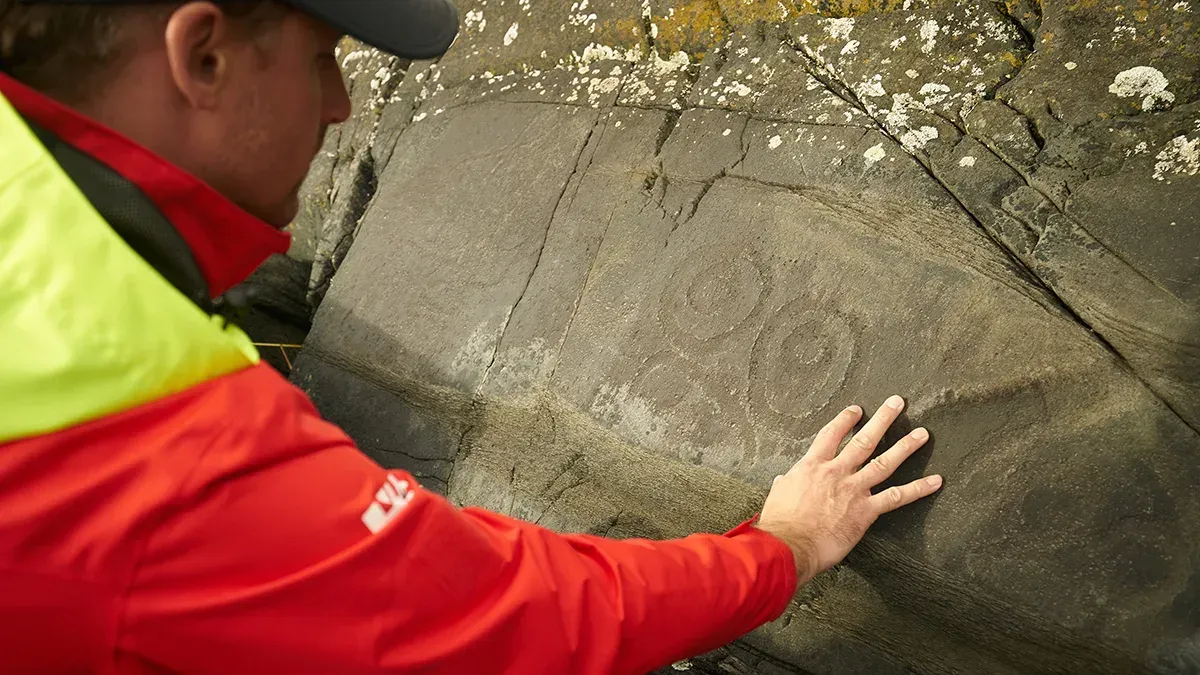
Wrangell's Petroglyphs
Visit one of Alaska’s oldest harbor towns. We continue cruising the Alaskan islands towards Wrangell. The traditional homeland of the Łingít people for 8,000 years, Wrangell has in the past two centuries come under the control of Russia, then Britain, and is now part of the US. Visit the local museum to learn more about Wrangell's fascinating past. Cross over to Shakes Island, where the Chief Shakes Tribal House and totem poles tell the story of the Indigenous Łingít people. Only one mile out of town, you’ll find Petroglyph Beach, which has ancient carvings etched into the large rocks along the shore. Created by the Łingít people, they are believed to be over 1,000 years old. Hikers will enjoy the nature trails, surrounded by alluring scenery at the mouth of Stikine River, and the foot of Mount Dewey at the edge of the temperate rainforest.
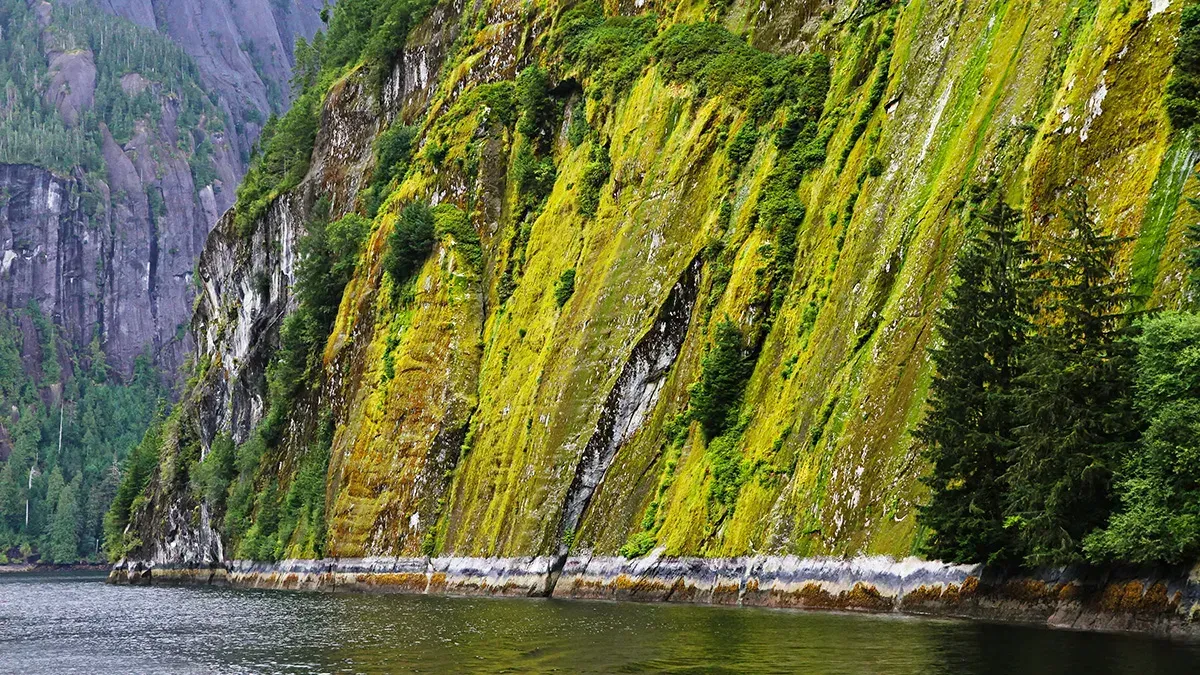
Unspoiled Misty Fjords
Revel in a wilderness where wildlife thrives. Part of the Tongass National Forest, Misty Fjords is a pristine wilderness of evergreens, waterfalls, and snowcapped peaks. The revered naturalist writer John Muir described the area as one of the most beautiful places he’d ever seen. Weather permitting, you'll join the Expedition Team to tour Misty Fjords in our small expedition boats or take kayaks out. Misty Fjords is rich in wildlife. You’ll scan for mountain goats, black and brown bears, and moose as you explore. The waters are home to Pacific salmon, otters, Steller sea lions, harbor seals, orcas, and Dall’s porpoises. Skyward, you might spot herons and bald eagles.

Canada’s Inside Passage
Enjoy sublime scenery as we sail the Inside Passage. The Inside Passage coastal route takes us through the Great North American Pacific Fjordland, a protected stretch of water over 930 miles long. Our smaller expedition ship allows us to reach areas that larger vessels can’t, meaning you’ll get to explore lesser-traveled channels with breathtaking scenery. Keep your cameras and binoculars at the ready to catch sight of whales, including humpback, fin, minke, and perhaps even orca.

A Taste of Vancouver
Disembark in British Columbia’s iconic city. Your expedition cruise ends in Vancouver, a beautiful city at the foot of the Rockies. Wander Gastown, Vancouver’s Victorian quarter, or walk around beautiful Stanley Park, which offers a stunning view of the city. Vancouver has a flavor all its own—and so does its global cuisine. Before your onward journey, we recommend you dine out in Chinatown, Punjabi Market or Little Italy for a taste of the city's buzzing atmosphere.
Itinerary

Scenic Seattle
Begin your adventure in the Emerald City. Your expedition cruise starts with an overnight stay in Seattle. If you can, why not arrive early and see what the Emerald City has to offer? Take a stroll through the nine-acre Olympic Sculpture Park for incredible views of Puget Sound and the surrounding mountains, admiring the work of renowned artists as you go. For a feast of the senses, visit the famous Pike Place Market. Operating for over a century, this lively farmer’s market boasts everything from buskers and bars to salmon-throwing fishmongers!

Your Expedition Begins
Launch your adventure in historical Nome. Today, we’ll fly you from Seattle to Nome for the start of your expedition cruise. Set at the tip of the Seward Peninsula and overlooking the Bering Sea, Nome is perhaps the most famous Gold Rush town in Alaskan history. There are artifacts from this era to be seen everywhere, including abandoned dredges, turn-of-the-century steam engines, and old railroad tracks. Nome was also the end point of three of Roald Amundsen’s great polar expeditions, including an attempt to reach the North Pole by air in 1926. It’s a fitting place to launch your grand Alaska adventure.

Exploring the Bering Sea
Get ready for adventure and watch for wildlife at sea. Spend your first day at sea chatting with fellow explorers or just watching the world sail by out on deck. You’ll have plenty of time to get to know your expedition ship, so perhaps now’s the time to take advantage of its facilities as you settle into expedition mode. Along with talks by the Expedition Team about what to expect on the voyage ahead, delve into the books in the onboard library and get to know the Science Centre. Natural wonders abound here, so keep an eye out for humpback whales and seabirds wheeling through the skies.

Wild St. Matthew
Experience this wild, remote, and isolated island. Part of the Alaska Maritime National Wildlife Refuge and 200 miles from the nearest village, St. Matthew Island is wild, remote, and isolated. You’ll see traces of abandoned buildings between black sand beaches and wildflower-dotted tundra. A few hardy souls have tried—and failed—to make a home here. Today, the only inhabitants are birds, including thousands of puffins, murres, and cormorants. On our nature landing, if we’re lucky, we’ll see the rare McKay’s bunting, which breeds almost exclusively here, and listen out for the sound of the singing vole, which was named after its unusual warning cry.

Unangan Life in St. Paul
Look out for wildlife on the largest of the Pribilof Islands. The windswept island of St. Paul is home to the largest Unangan community in the US, numbering around 480. You can visit the historical remains of barabaras here—traditional dwellings built halfway underground to protect against the sea winds. St. Paul is also designated an Important Bird Area, and around 300 species of migrating birds use it as a resting point. Scan for horned and tufted puffins, the Pribilof sandpiper, and the rare red-legged kittiwake. On the shore, you may find northern fur seals waddling and playing—half the world's population of these charming animals lives on these islands.

Learning and Leisure
Relax and reflect as we cruise along the coast. We’ll continue south through the Bering Sea from the Aleutian Islands toward our next stop of Dutch Harbor. The Expedition Team will prepare you for our upcoming destinations and continue their lecture series. Keep scanning the seas and skies for puffins, auklets, and murrelets, especially closer to the coast. If you’re lucky, you might glimpse the red-legged kittiwake, which is only found in this part of the world. If you’d like to take it easy, you can take in the panoramic views from our Explorer Lounge & Bar, from the infinity pool or from the outdoor hot tubs.

Discover Dutch Harbor
Learn the fascinating history of America’s biggest fishing port. The US’s largest fishing port, Dutch Harbor, is a fascinating place to visit. As we sail towards it, you may see Mount Makushin, a sometimes-steaming volcano reaching almost 6,000 ft. Here, you’ll learn about the local Indigenous Unangax̂ people at the Museum of the Aleutians. Visit the Russian Orthodox Cathedral or tour the WWII museum commemorating the battle that took place here in 1942. Scout for bald eagles and puffins. Foxes, lemmings, and wild horses thrive on land, while whales, sea lions, and porpoises command the waters. Dutch Harbor was the filming location of the reality television series The Deadliest Catch, which follows crab fishermen at work under extreme conditions.

The Ghost Town of Unga
Experience a deserted Alaskan town. Wild and deserted, Unga Village is an abandoned yet fascinating settlement on the southern end of Unga Island. It was settled by the Unangax̂ people in 1833 but was abandoned in 1969 as subsistence fishing proved insufficient to support living here. Today, the few wooden buildings that remain are the only evidence that people once lived here. Pink lousewort, fireweed, and other wildflowers surround the abandoned shacks as nature has gradually taken over. Experience the eerie beauty of this place during a nature landing with our small expedition boats.

The Remote bays of the Alaska Peninsula
Explore rugged scenery in an untamed wilderness. The Alaska Peninsula is an untamed wilderness and a haven for wildlife. The region is characterized by its raw coastal landscapes, towering mountains and secluded bays. Join your Expedition Team for close exploration of hidden bays and inlets along the shoreline, offering the opportunity to scout for bears, bald eagles, and marine species like sea otters and humpback whales. Learn about the geological evolution of the region, appreciating how natural forces have sculpted the unique topography around you.

Brown Bears in Katmai
Spot brown bears in Katmai National Park. Your adventure continues in the four-million-acre Katmai National Park, which has over a dozen active volcanoes. Katmai is also home to more than 2,000 protected brown bears – the largest concentration in the world. We’ll safely scout for bears from the deck or in our small expedition boats. They might be foraging for berries, digging for clams, or catching fish in the stream. Depending on conditions, we might visit either Geographic Harbor, Kinak Bay or Kukak Bay.

Verdant Kodiak
Explore the home of the Alutiiq people. Kodiak Island, known as the ‘Emerald Isle, features lush temperate forests, mountains, and a rugged coastline. Its wetlands are home to a variety of bird species and wildlife, including the island’s most iconic residents - Kodiak bears. Around 3,500 of them live in the Kodiak National Wildlife Refuge, which covers two-thirds of the island. We’ll search for whales, sea otters, and seals, and, if we’re lucky, catch a glimpse of Kodiak brown bears in their natural habitat, all set against the stunning backdrop of Alaska’s wilderness.

Across the Gulf of Alaska
Enjoy a day of relaxation and birdwatching at sea. Your cruise continues across the Gulf of Alaska. It’s the ideal time to enjoy onboard facilities such as the infinity pool, hot tubs, and sauna. Go for a run, hit the gym, or enjoy a massage in the spa. In the Science Center, the Expedition Team invites you to join lectures about subjects such as Alaska’s wildlife, geology, glaciology, history, and culture. Relax in the Explorer Lounge & Bar and share a drink with your fellow guests, or just sit back and enjoy the view. See if you can spot all three species of North Pacific albatross. The Laysan and black-footed albatross are often sighted, but the short-tailed albatross is harder to spot.

Glaciers of Icy Bay
Spot wildlife in these glacier-fed waters. Today is an exploration day in Icy Bay. Three glaciers – Guyot, Yahtse, and Tyndall – can be seen from this bay. If conditions allow, you’ll explore in our small expedition boats or by kayak, immersing you in the remarkable beauty of this icy landscape. From Icy Bay, you can admire striking, jagged Mt St Elias, known for its steep vertical relief, which has the second-tallest peak in the US and third third-tallest in the US and Canada at over 18,000 ft. In the Gulf of Alaska for we’ll scout for humpback whales, orcas, sea otters, and harbour seals often seen in these waters.

Blended Cultures of Sitka
Take in Sitka’s views and a unique mix of cultures. Surrounded by Tongass National Forest, Sitka is only accessible by sea or air. Get out on deck for stunning views of the Sisters Mountains and Mount Edgecumbe volcano. Inhabited by the Łingít people for 10,000 years, the town was settled by Russian explorers around the turn of the 19th century before being sold to the United States after Russia lost the Crimean War. Today, Sitka has roots in all three cultures. A visit to the Russian Orthodox cathedral and the Russian Bishop's House is recommended. Admire ornate Haida and Łingít totem poles at Sitka National Historical Park and enjoy a walking trail through the forest to the ocean.

Wrangell's Petroglyphs
Visit one of Alaska’s oldest harbor towns. We continue cruising the Alaskan islands towards Wrangell. The traditional homeland of the Łingít people for 8,000 years, Wrangell has in the past two centuries come under the control of Russia, then Britain, and is now part of the US. Visit the local museum to learn more about Wrangell's fascinating past. Cross over to Shakes Island, where the Chief Shakes Tribal House and totem poles tell the story of the Indigenous Łingít people. Only one mile out of town, you’ll find Petroglyph Beach, which has ancient carvings etched into the large rocks along the shore. Created by the Łingít people, they are believed to be over 1,000 years old. Hikers will enjoy the nature trails, surrounded by alluring scenery at the mouth of Stikine River, and the foot of Mount Dewey at the edge of the temperate rainforest.

Unspoiled Misty Fjords
Revel in a wilderness where wildlife thrives. Part of the Tongass National Forest, Misty Fjords is a pristine wilderness of evergreens, waterfalls, and snowcapped peaks. The revered naturalist writer John Muir described the area as one of the most beautiful places he’d ever seen. Weather permitting, you'll join the Expedition Team to tour Misty Fjords in our small expedition boats or take kayaks out. Misty Fjords is rich in wildlife. You’ll scan for mountain goats, black and brown bears, and moose as you explore. The waters are home to Pacific salmon, otters, Steller sea lions, harbor seals, orcas, and Dall’s porpoises. Skyward, you might spot herons and bald eagles.

Canada’s Inside Passage
Enjoy sublime scenery as we sail the Inside Passage. The Inside Passage coastal route takes us through the Great North American Pacific Fjordland, a protected stretch of water over 930 miles long. Our smaller expedition ship allows us to reach areas that larger vessels can’t, meaning you’ll get to explore lesser-traveled channels with breathtaking scenery. Keep your cameras and binoculars at the ready to catch sight of whales, including humpback, fin, minke, and perhaps even orca.

A Taste of Vancouver
Disembark in British Columbia’s iconic city. Your expedition cruise ends in Vancouver, a beautiful city at the foot of the Rockies. Wander Gastown, Vancouver’s Victorian quarter, or walk around beautiful Stanley Park, which offers a stunning view of the city. Vancouver has a flavor all its own—and so does its global cuisine. Before your onward journey, we recommend you dine out in Chinatown, Punjabi Market or Little Italy for a taste of the city's buzzing atmosphere.
All-Inclusive Benefits
All planned activities are subject to weather and ice conditions; excursions and activities are subject to change.
Expedition Cruise
- A stay in a cabin of your choice
- Daily breakfast, lunch, and dinner
- Wine, beer, and spirits available at meals and throughout the day and evening (subject to licensing laws, excludes premium drinks)
- All day coffee, tea, and soft drinks
- Fine dining in the restaurant Lindstrøm is included for suite guests
- A complimentary Ocean Bottle water bottle to refill on board and take home
- Wind and waterproof expedition jacket
- Professional photos from your trip taken by our onboard photographer
- Complimentary Wi-Fi. Please note, streaming is not supported
- Use of sauna, hot tubs, pool, fitness room, lounges, and more
- Gratuities included. Fantastic service is standard at HX – though if you’d like to leave something extra, it’s always appreciated
- Range of included activities
On Board Activities
- In-depth lectures and discussions hosted by our knowledgeable Expedition Team
- Use of our Science Centre, including the library and advanced biological and geological equipment
- The Citizen Science Program allows guests to assist with ongoing scientific research
- An onboard professional photographer will give tips and tricks for taking the best landscape and wildlife photos
- Informal gatherings with the crew for daily briefings
- Daily briefing with the Expedition Team about the plans for the next day
Landing Activities
- Escorted landings with small expedition boats
- Loan of boots, trekking poles, and all equipment for activities. Your HX travel documents will have a recommended packing list.
- Expedition photographers on hand to assist you
MS Roald Amundsen
Named after the legendary Norwegian explorer, Roald Amundsen - the first man to traverse the Northwest Passage in 1903, and reach the Geographical South Pole in 1911. MS Roald Amundsen is as pioneering as the man it is named after, the state-of-the-art ship features new and environmentally sustainable hybrid technology that reduces fuel consumption and shows the world that hybrid propulsion on large ships is possible.
Pre & Post Cruise Extensions
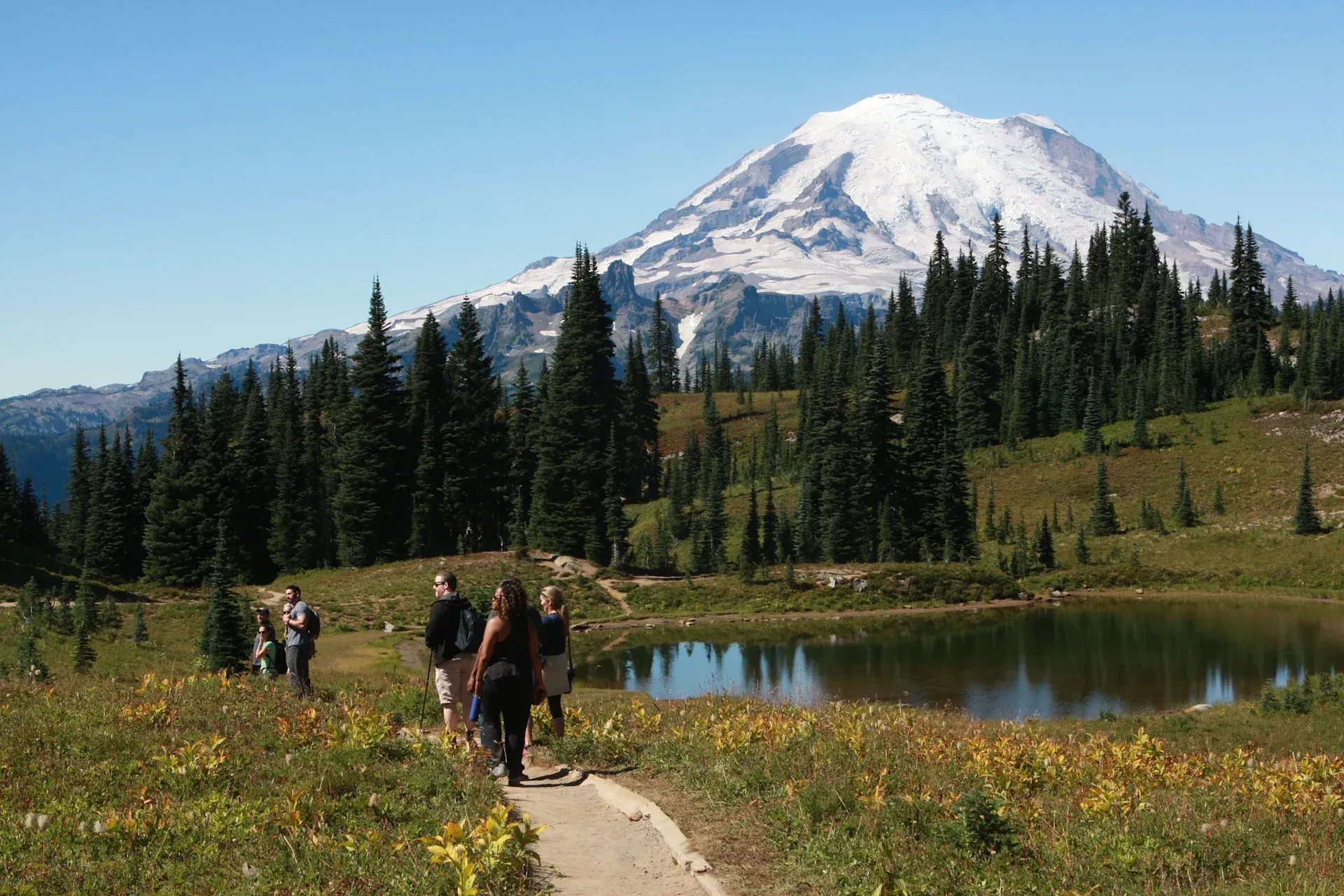
Wild Nature Discovery: Mount Rainier National Park
Pre-Cruise
2 Days
Love this cruise?
Have Viking Travel book your next getaway!



